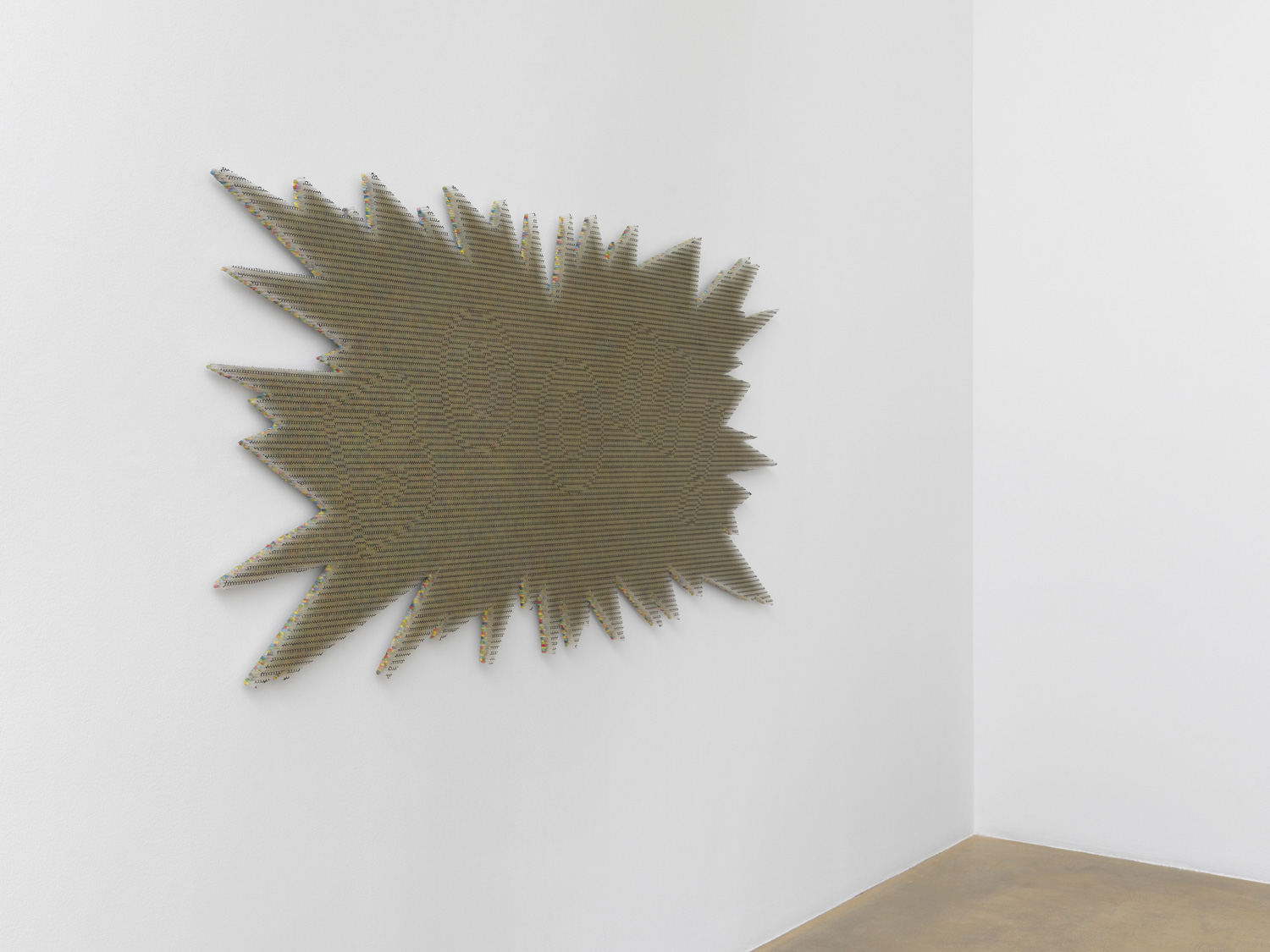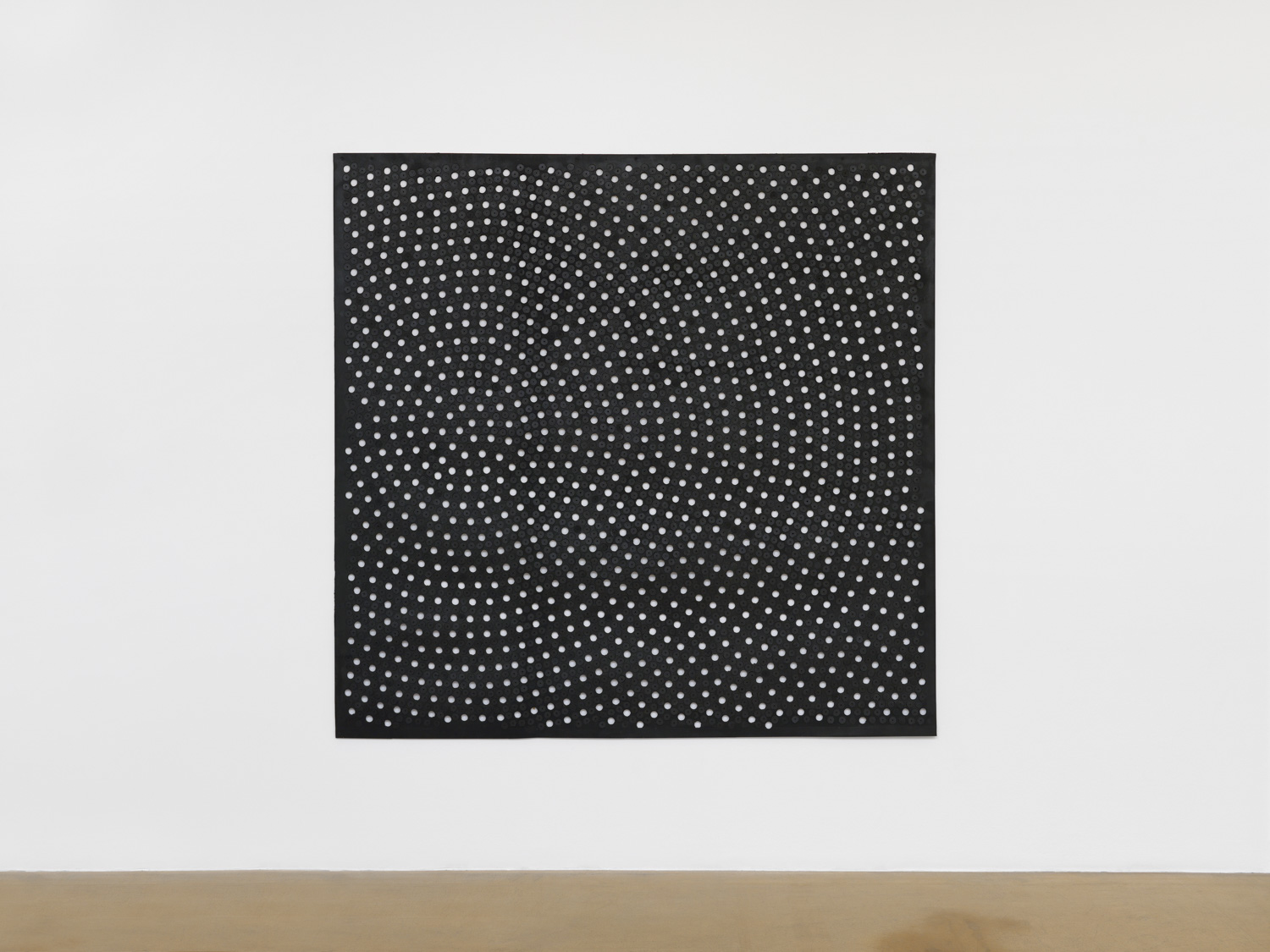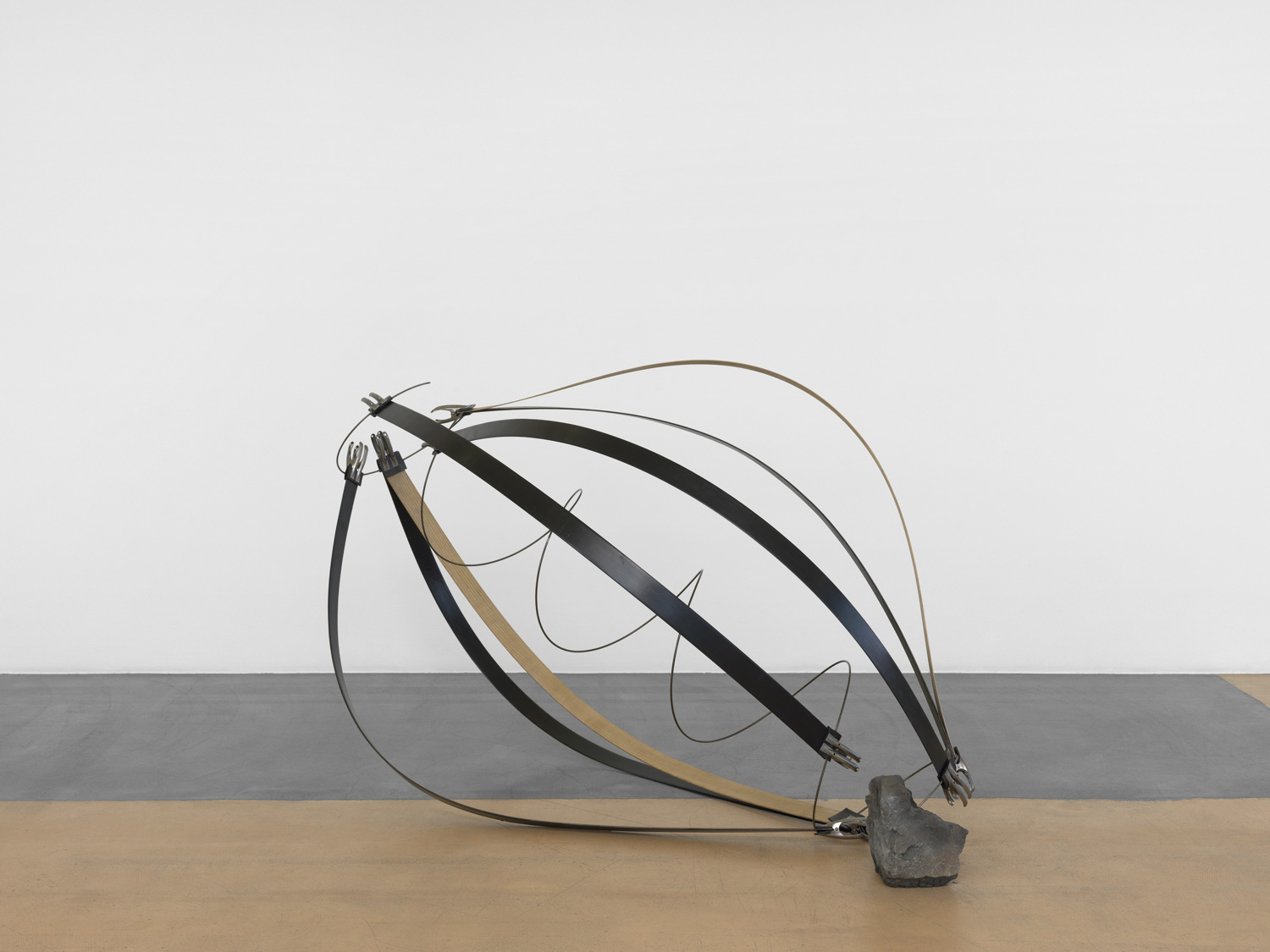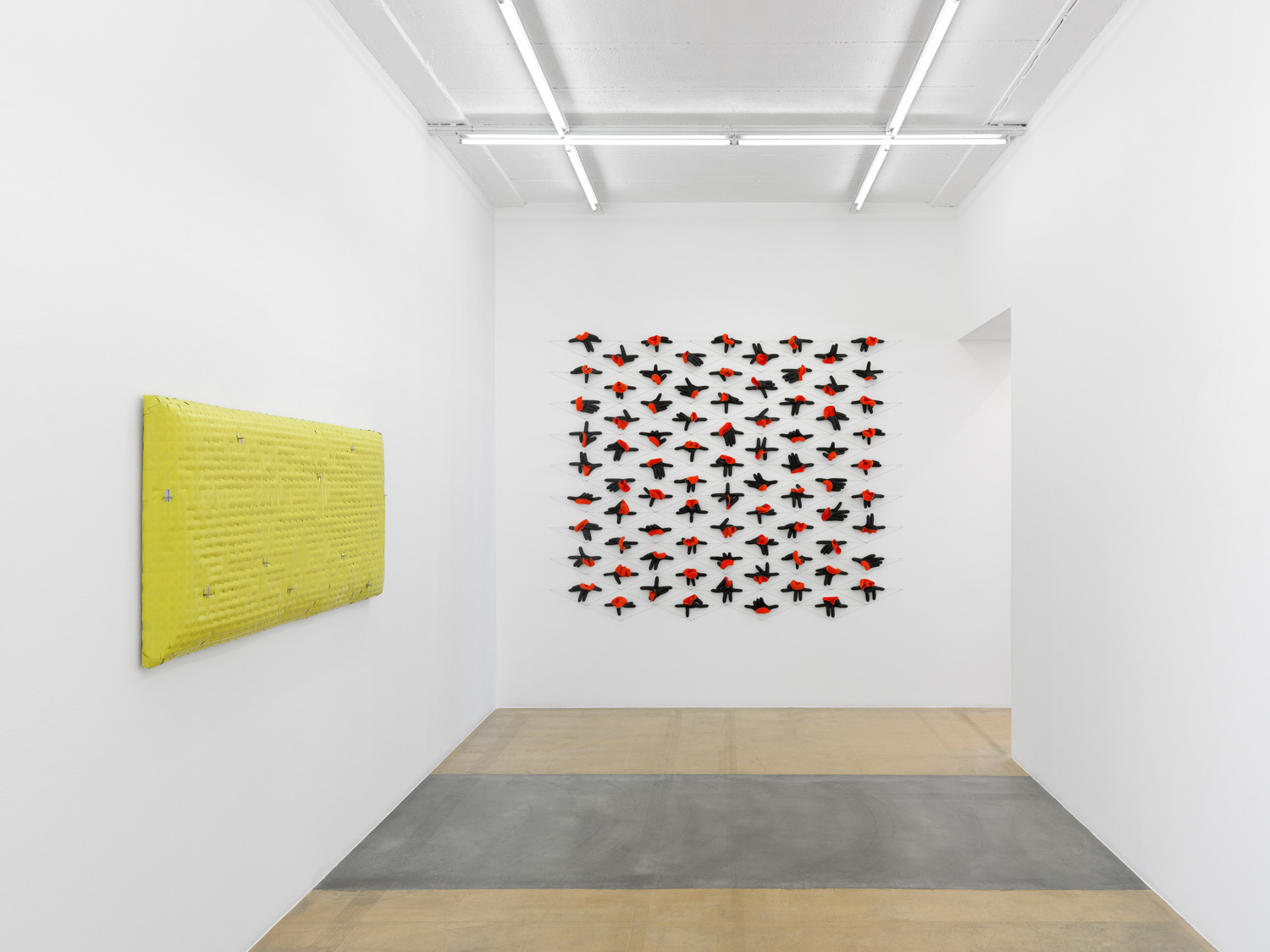This exhibition gave an overview of the practice of Carmen Perrin (b. 1953), starting with her early experimental forays into sculpture in the 1980s and continuing to the present day. The works on display highlighted her affinity for industrial materials and construction tools, which form the raw material for her art.
In 1960, Perrin and her family moved from La Paz, Bolivia, where she was born, to Geneva. She has since spent the majority of her time in the Swiss city. During her early years at the Geneva School of Fine Arts, where she studied between 1977 and 1981 (and later taught between 1989 and 2004), she was active within the Women’s Liberation Movement. In the 1990s, she took a growing interest in the relationship between art and the setting in which it is presented. Her pieces were routinely displayed in public spaces, especially in Geneva, where she designed street furniture and permanent installations. Notable examples include Ils passent (2012), a children’s playground comprising fossil-like mounds of concrete, and Noir ductile (2013), the main doors to Geneva’s Cornavin train station, which are dotted with round pieces of colored glass.
The works held in the MAMCO collection, produced by Perrin in the 1980s, constituted the core of this exhibition. In all of them, the material is in tension. The items she creates are made from industrial, craft and natural materials such as steel, rubber, brick, and stone, each assembled, pulled taut, crimped, or weighted. In other words, each piece is subjected to a physical force—centripetal, centrifugal, or gravitational—that alters its shape and holds it in balance. Her sculptures, placed simply on the floor, reflect an interplay between their constituent materials and the forces that act upon them. Here, they interacted with the wall-mounted rubber sheeting with its perforated pattern, itself created by methodically and repetitively removing material.
The second exhibition room contained more recent items from Perrin’s body of work. Produced at the turn of the 21st century, they are more narrative in character, with unmistakable references to hands and handiwork: these pieces are made from construction and trade tools such as gloves, hooks, tape measures and polycarbonate honeycomb panels. The way in which Perrin subverts these objects speaks to both her aesthetic practice and a certain insolence inherent in her work. Here again, the items are subjected to the same forces as her pieces from three decades earlier—tension and assembly give shape to practical, everyday items.
- Exhibition curated by Elisabeth Jobin




